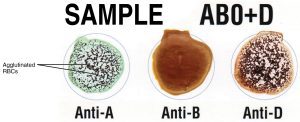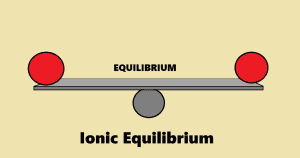When it comes to powerful skin treatments that deliver lasting results, few are as effective as a phenol peel. Also known for its intense rejuvenating effects, this deep chemical peel has the potential to dramatically improve the appearance of deep wrinkles, acne scars, and pigmentation issues. But what exactly is a phenol peel, and how does it work? Here, we’ll discuss the science behind this transformative procedure, breaking down its chemical composition, benefits, risks, and everything you need to know if you’re considering a phenol peel.
Table of Contents
ToggleWhat is a Phenol Peel?
A phenol peel is a type of deep chemical peel that uses phenol, also known as carbolic acid, to remove damaged layers of skin. Unlike superficial or medium-depth peels like glycolic acid or TCA peels, a phenol peel penetrates deeply into the skin, targeting the dermal layers to stimulate collagen production and promote cell turnover. This powerful treatment is especially effective for individuals looking to treat deep wrinkles, sun damage, and certain types of acne scars.
History and Development of Phenol Peel
It was initially developed in the early 20th century and has evolved significantly over the years. While their formulation and application have been refined, phenol peels remain one of the most effective treatments for achieving significant, long-lasting skin rejuvenation.
How Does a Phenol Peel Work? The Science Explained
Composition and Formulation
Phenol, or carbolic acid (C₆H₅OH), is an organic compound with a hydroxyl group bonded to an aromatic ring. Its structure makes it a potent peeling agent, with high penetration power into the skin. A typical phenol peel formula includes phenol as the active ingredient, often combined with water, glycerin, and sometimes croton oil to enhance its depth and effectiveness. Each ingredient has a specific role:
- Phenol: The primary exfoliating agent, responsible for deep dermal penetration.
- Glycerin: Provides hydration, reducing irritation.
- Croton Oil: Enhances the peel’s penetration, making it more effective at reaching deeper layers.
Mechanism of Action
- Depth of Penetration: Phenol’s unique properties allow it to reach the skin’s dermal layer, where collagen and elastin reside. Its deep penetration makes it suitable for addressing serious skin issues.
- Keratolytic Action: Phenol’s keratolytic effect breaks down proteins in the outer layer of the skin, leading to the exfoliation of damaged cells and stimulating new cell growth.
- Stimulation of Collagen Production: As phenol penetrates the dermis, it triggers a healing response. This response includes the formation of new collagen fibers, which results in firmer, smoother skin with improved elasticity over time.
Phenol Peel Procedure
Pre-Treatment Preparation
Before undergoing the procedure, dermatologists often recommend a pre-treatment regimen to prime the skin. This might include using retinoids or stopping certain medications that could increase sensitivity. Anesthesia is generally required as the treatment is intense and can be painful.
Application Process
During the procedure:
- The phenol solution is carefully applied to clean the skin.
- Dermatologists monitor the timing and thickness of the application to control penetration depth and prevent over-exfoliation.
- The treatment may last between 30 to 90 minutes, depending on the area being treated.
Post-Treatment Care
After the peel, patients can expect significant peeling, redness, and swelling. The healing period typically takes two to four weeks, and strict aftercare, including sun protection and moisturizing, is essential to achieve optimal results.
Benefits of Phenol Peels
Phenol peels offer dramatic improvements in the skin’s appearance and texture:
- Reduces deep wrinkles and fine lines for smoother, younger-looking skin.
- Minimizes acne scars and other forms of hyperpigmentation.
- Improves skin texture and tone, providing a long-lasting glow.
Efficacy Compared to Other Peels
Compared to TCA (trichloroacetic acid) peels or glycolic acid peels, phenol (carbolic) peels offer deeper and more lasting results. While they may require a longer recovery period, their effects on aging, sun-damaged skin, and scarring are often far superior, especially for those looking for a substantial transformation.
Risks and Side Effects of Phenol Peels
They are highly effective, but they also come with potential risks:
- Common Side Effects: Redness, peeling, swelling, and discomfort are expected after treatment.
- Long-Term Risks: In some cases, these peels may lead to hypopigmentation (lightening of the skin), especially in people with darker skin tones.
- Phenol Toxicity: There is a risk of systemic absorption, which can affect the heart, so phenol peels are generally administered only by qualified dermatologists.
Contraindications
These peels are not suitable for everyone. Individuals with darker skin tones, heart conditions, or certain skin conditions should avoid phenol peels, as these factors increase the likelihood of complications.
Advances and Alternatives to Phenol Peels
Newer skincare technologies are offering alternatives to traditional phenol peels:
- Buffered Phenol Peels: Some formulations are modified to reduce the intensity of the peel, providing a safer option for more patients.
- Laser Resurfacing: Lasers can offer similar benefits with more control over depth and a potentially shorter recovery period.
Is a Phenol Peel Right for You?
If you’re considering phenol peels, it’s essential to consult with a board-certified dermatologist who can evaluate your skin type, concerns, and medical history. While these peels can offer transformative results, they require a careful approach to ensure both effectiveness and safety.






